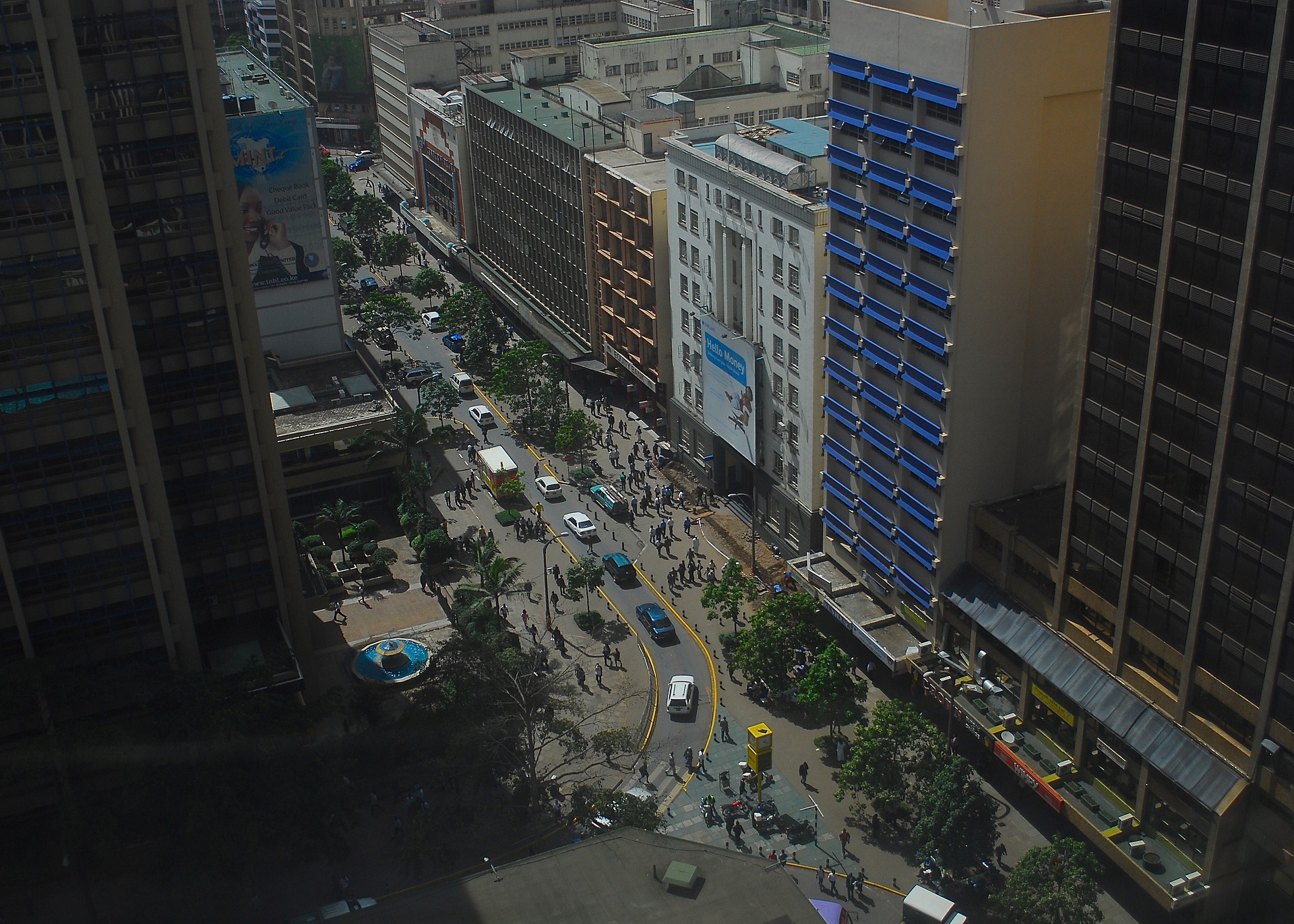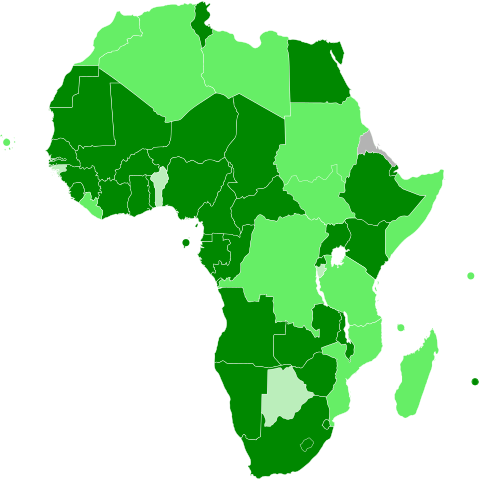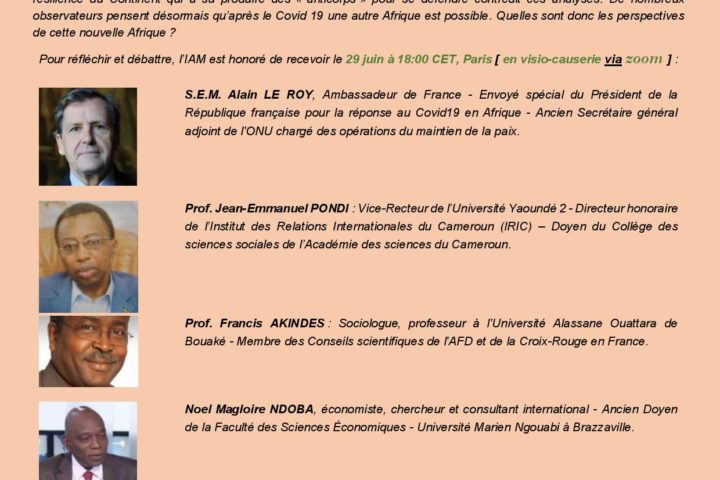
Manga KUOH
Economist and international relations specialist
Former international civil servant at the World Bank and the IMF
Introduction
- The creation of the African Continental Free Trade Area (AfCFTA) [1] by the Heads of State and Government meeting in Kigali on March 21, 2018, was intended to be a high point in the Agenda 2063 proposed by the African Union in 2015 and whose goal is to achieve an “integrated, prosperous and peaceful Africa” for the well-being of the people of that continent. Covering all African countries in an area larger than the combined territories of the United States, China, India, France, Germany, Spain and Italy, the FTAA plans to be the world’s largest free trade area with a population of 1.3 billion.
- In its first phase, the FTAA presents impressive prospects for 2035 including:
- The elimination of 97% of tariff lines on imports from the zone’s countries within five to ten years;
- An 80% increase in intra-continental exports and a 20% increase in exports outside the continent;
- A 7% increase in income due to growth in production (particularly services and manufacturing);
- 30 million people out of extreme poverty;
- 67 million people out of moderate poverty.
- Enthusiastic and stimulating for some, such announcements are also likely to arouse skepticism, especially among those who are tired of counting the number of organizations, initiatives, plans and other continental or regional programs that have had mediocre results in Africa. Hence the interest in questioning the appropriateness of a free trade agreement in this large area. The following paragraphs argue that the FTAA has an economic rationale that justifies its initiative, but that its effective implementation will be a major challenge for its member countries. The economic rationale for the FTAA project can be examined using the concept of opportunity cost and exchange theory.
I. Near-zero opportunity cost
- Borrowed from economists’ common sense, the question of opportunity cost measures, for a given option, the loss of gains and benefits associated with giving up an available option. The choice that would generate the least amount of this kind of loss is then the one to be retained. Until the day before the Kigali Agreement was signed, Africa had two possible options: the Status Quo Option and the ZLECAF Option. It chose the latter, which, although progressive in time, constitutes a rejection of the former. The question then becomes: what gains and benefits does a given African country forego as a result of the FTAA Option?
- A properly covered risk of market share loss. Compared to maintaining the status quo, is a given African country at risk of experiencing significant losses in its current market share in Africa or missing the opportunity to expand that market share for reasons other than those observable under fair competition?
- In a free trade area, the determination of the origin of a good is necessary to ensure that a traded product is eligible for preferential treatment in the country of import. Unlike the customs union, the free trade area does not involve a common external tariff. It is therefore important to avoid goods from countries outside the free trade area gaining preferential access through one of the member countries with the lowest tariffs. There is a risk of significant opportunity cost through so-called “transshipment” practices, which would involve re-exporting goods imported from a member country outside Africa to other African countries at low tariffs. The country engaging in such practices would introduce unfair competition that could dissuade companies in the free trade area from investing and producing goods and services. The desired development of trade between countries in the zone would then be thwarted.
- In order to exclude such practices, discussions during the preparatory phase led to the adoption of Rules of Origin, which are contained in Annex II of the Agreement. These rules define the minimum processing criteria that must be met in the FTAA countries to determine which goods are eligible for preferential access to the continental market. Therefore, it can be concluded that, for continental trade in Africa, strict compliance with the rules of origin should negate the opportunity cost of the FTAA Option (the cost of giving up the Status Quo Option) in terms of market share.
- The risk of deteriorating the balance of public finances is insignificant. The other risk mentioned in particular by the ministries in charge of finance is a deterioration in public finances due to the reduction in budgetary revenues linked to the reduction in import duties. Available simulations [2] show that the impact of the FTAA is very slightly negative in the short/medium term, with a drop in customs revenues of around 1.5% for most countries. This is understandable, since African countries import on average barely 10% of their goods from the continent. In the longer term, it appears that the effect of the planned reduction in tariff lines and tariff cuts will be more than offset by the increase in imports, leading to more customs revenue under the FTAA-Z option than under the status quo option.
II. Trade, Value, and Industrialization
- As noted above, a major objective of the Agreement’s signatory authorities is that the implementation of the FTAAP should increase the quantity of goods imported from Africa for consumption by African populations. Such an objective recognizes trade as a creator of value in accordance with economic theory. Economic theory emphasizes that exchange does not merely facilitate daily life but creates value in the following ways:
- The fact of being able to exchange encourages a division of labor which itself generates specialization;
- Specialization makes it possible to produce larger quantities and, thanks to economies of scale, to reduce unit costs;
- Comparative advantages are then created or consolidated (the advantage of concentrating on what each person does best), the exploitation of which increases the total quantity produced by all.
- Unfortunately, in Africa, reality has departed from the promises of the theory. For more than six decades of independence, comparative advantages reduced to natural endowments (mining, forestry, cash crops) have led to trade but not to economic development because, in most cases, this trade has involved goods with low added value. Is the advent of the FTAA likely to generate trade (in quality and quantity) that maintaining the status quo would not allow?
- In the conception of the FTAA, the answer is yes, because the major stated ambition of the project is to promote the industrialization of Africa; that is, the marketing of more high value-added goods. Contrary to what the term “free trade” might suggest, the economic success of the FTAA will depend fundamentally on progress in the industrial sector, not on trade prowess.
- The centrality of the industrial dimension in the project also helps to explain the continental scope chosen for the FTAA. One of the shortcomings of regional agreements (ECOWAS, SADC, CEMAC, etc.) is that they often associate similar countries to the point of limiting their ability to trade goods [3]. The continental dimension certainly offers more diversity, complementarities and, consequently, the possibility of trade between African countries. Finally, a continental economic space allows for more economies of scale than a regional one. These economies of scale are particularly valuable for the promotion of industries that substitute for imports from other continents.
III. The Great Challenge of Implementation
- Acknowledging the merits of the FTAA does not preclude stressing that the success of the project is not guaranteed. First, it is worth mentioning the incompatibility of a free trade area that would generate progress with the insecurity, political violence, and armed struggles that still exist in Africa. Armed conflicts (especially those with subregional ramifications) destroy any hope of development, no matter how relevant the measures on a free trade area’s agenda. But outside the realm of security and politics, the effective implementation and transparent management of the planned provisions of the FTAA and the inescapable issues of industrial development are a major challenge.
- Non-tariff barriers and trade facilitation measures. According to the project’s simulations, reducing tariffs (eliminating tariff lines and lowering rates) alone would only increase the continent’s real income by 0.2 percent by 2035. Reducing tariffs in combination with lowering non-tariff barriers (NTBs) [4] would increase income by 2.4 percent. Finally, by combining the reduction of tariffs, the reduction of NTBs and the introduction of trade facilitation measures (TFMs) [5], the continent’s real income would increase by 7 percent.
- The impact of different forms of trade liberalization deserves attention because the NTB and TF reforms that are expected to have the most positive effects are also the most difficult to implement and sustain. The effective and sustainable implementation of the decisions agreed upon by the FTAA countries will require that the administrations concerned be sufficiently trained and equipped, including with regard to modern communication technologies. In addition, to the material constraints and operational difficulties that can be described as regular, there are those practices related to corruption, of which the border services are generally a major focus in most countries.
- The essentials of industrialization. As already noted, the success of the FTAA will be measured primarily by the industrialization of African economies, i.e., the ability to make manufactured goods available to consumers hundreds or even thousands of kilometers from their respective manufacturing sites. Leaving aside questions relating to financing, which should not be the most worrying, the industrialization and marketing of manufactured products in Africa require answers to questions in three areas.
- Transport infrastructure (road, rail, maritime).
- Telecommunications with international standard Internet connectivity.
- Qualified personnel at several levels of competence. In some countries, this will require a major reform of education and technical training as well as the strengthening of managerial training. In addition, special policies and procedures will be needed to mobilize, as needed, expertise available in other African countries. [6]
Conclusion
- The FTAA is both a challenge and a gamble. As ambitious as it may seem, the gamble is justified from an economic point of view. The challenge is very great at the operational level, given the progress that this project requires in terms of governance in the vast majority of African countries. The future will tell whether political leaders and major economic and social actors will have taken the necessary steps to ensure that history aligns with their aspirations.
[1] If necessary, the reader may wish to read elsewhere about Zlecaf: its genesis, organization, decision-making and management methods, various protocols, and timetable of work.
[2] See “The African Continental Free Trade Area: Economic and Distributional Effects”, The World Bank Group, 2020.
[3] For example, Zambia’s copper does not find its main outlet in the Democratic Republic of Congo any more than Mali’s cotton does in Niger or Gambia’s groundnuts in Senegal.
[4] Examples of NTBs: import licenses, sanitary standards, technical and environmental specifications.
[5] Provisions to expedite the movement, release and clearance of goods.
[6] Special procedures because experience shows that references to the “free movement of people” in official documents often remain wishful thinking (even away from conflict zones).




